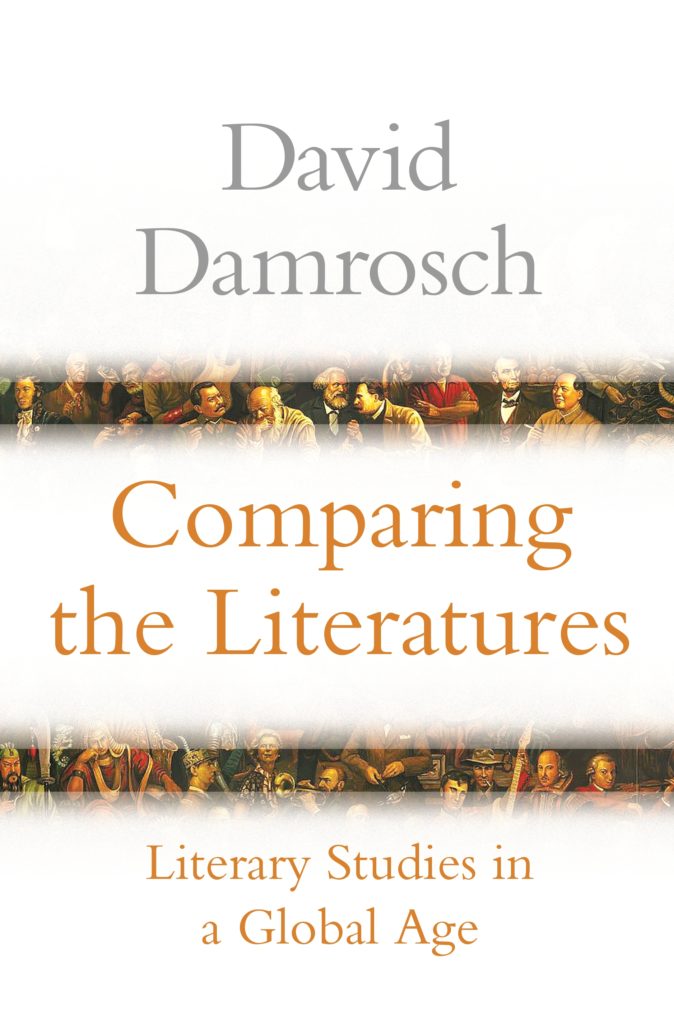
The 1956 edition of The Norton Anthology of World Masterpieces had NO women among its 73 authors. Only in the 1976 Third Edition did the editors finally include a woman writer: Sappho–two whole pages. Even though I found David Damrosch’s Comparing the Literatures: Literary Studies in a Global Age a bit of a hodgepodge, it had its entertaining moments. I particularly liked Damrosch’s chapter on “Politics” where he devotes many pages to one of my favorite literary critics, Northrop Frye. Frye consistently promoted Canadian writers and the close reading of Literature.
Damrosch jumps around from writer to writer. Nabokov to Tolkien. Joseph Conrad to Boris Akunin. No matter. Damrosch manages to come up with interesting stories and obscure facts about writers around the world. I found Comparing the Literatures compelling and entertaining. Are you interested in World Literature? GRADE: B
TABLE OF CONTENTS:
Table of Contents
List of Illustrations vii
Acknowledgments ix
Introduction 1
1 Origins 12
2 Emigrations 50
3 Politics 84
4 Theories 122
5 Languages 165
6 Literatures 207
7 Worlds 253
8 Comparisons 303
Conclusion: Rebirth of a Discipline 334
Bibliography 349
Index 375
Well. yes…hard to imagine someone who will Only read, say US writers, though sure there are some. (And so many who will only read in certain fields of literature.)
Though the Norton stats are pretty sad, to say the least. Thanks for the review!(
Todd, I suspect actual reading is in decline in the United States. Too many devices, too much digital content, too few bookstores.
In theory, yes, but I don’t read much of it once you get past established classics and big name authors like Elena Ferrante. Does Damrosh take the term to mean literature written in a language other than English?
Michael, Damrosh pretty much considers literature written in non-English languages.
Firs,t an aside. Speaking of Northrop Frye, he was at a meeting in the early ’70s when Jackie worked at the MLA Headquarters in New York. (She soon after got me a job there too.) It was 1970 and around the time the townhouse on 10th Street (next door to Dustin Hoffman’s) blew up. The MLA was on Fifth Avenue and 12th Street in the Village, and as it was in the Forbes Building they got several calls about bombs (Forbes being a “capitalist tool”). At one meeting of the Board (I think) the alarms went off, one of several times this happened. Jackie was a secretary and her office was outside the conference room. Frye came out, frantic from the alarm bells, and asked what was going on, to which Jackie casually said, “bomb scare,” got her stuff, and calmly walked down the stairs, while Frye nearly had a heart attack.
But I digress. No, I’m not interested in reading this, but yes, I do read some foreign language books in translation, though admittedly most of them are mysteries these days. I am a huge fan of Chekhov’s short stories, and Andrea Camilleri’s Sicilian mysteries about Insp. Salvo Montalbano are a favorite too.
Jeff, what a great Northrop Frye (and Jackie!) story!!! Like you, most of my reading of foreign language books in translation consists of mysteries. Simenon makes up the bulk of that type of book.
Read a lot of the classics when younger. Not so much now. I do read a lot of books in translation, mostly Scandinavian crime novels with a few French, Japanese, Spanish and Italian ones. And a few Chinese and Scandinavian SF writers.
Steve, you are a Renaissance Man!
Generally, no.
No, thanks.